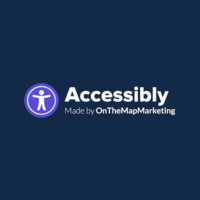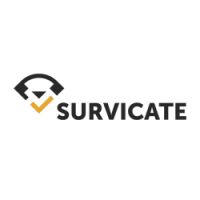5 tools to make accessible website to get a golden spot in SERPs

When people think about designing a website, seldom does web accessibility pop into the mind. However, it definitely should.
Why?
Well, for starters, people with disabilities form a significant chunk of the consumer base for various sectors. As per a survey conducted by Pew Internet Project, over 54 percent of adults with disabilities are present online. And as the aging population is projected to reach 1.5 billion by 2050, more and more people will require assistance when using websites.
Google has certainly caught up to the importance of web accessibility. This is why it now ranks ADA-compliant websites higher in its search engines than those sites that are not web-accessible. So, unless your website is accessible to all, your business won’t be able to get a high ranking and hence traffic.
Whether you do it to attract the masses or to make your website SEO-friendly, you won’t be able to make your website accessible without equipping yourself with the right tools. Here are the necessary resources that will help you along the way.
1. AccessiBe
When it comes to providing a fully automated one-stop web accessibility solution, accessiBe does it right. The platform takes into account the problems faced by people with blurred vision, motor disabilities, arthritis, cognitive disorders, and photo-sensitive epilepsy and offers the following:
- Screen Reader Optimization: Machine learning is used to help people with disabilities in interpreting every element of a web page in a similar manner as sighted users view it. This allows for smooth navigation of the site.
- Keyboard Navigation Optimization: Allows websites to be navigated solely through the keyboard. Whether it be popups, forms, drop-down menus, or buttons, each element of the website is made accessible via keyboard keys.
- Live Dictionary: A built-in dictionary makes it easier for people with cognitive disorders to check the meaning of phrases, abbreviations, and references they don’t understand.
- UI adjustment: People with vision impairments are provided the control of changing the size, spacing, and scaling of text as well as the contrast ratio for optimum readability.
- Stopping flashing animations: A stop animations button is included, which helps freeze all content that might trigger photo-sensitive epilepsy.

Considering the variety of the solutions provided, this is an excellent tool for all websites to use. Remember, the more inclusive and accessible you are, the more customers you will attract.
2. Funkify
To make a website that is accessible to all, it is first important to understand the plights of people with disabilities. Once you understand the challenges, you can fully appreciate the need for a solution.
This is why beginning your web design development with a simulation tool is an excellent way to start. Funkify is one tool that comes in handy. This chrome extension helps users in viewing a normal website while being in the shoes of people with different disabilities.
The extension provides simulations for:
- Dyslexia
- Visual impairments
- Hyperactivity
- Trembling
- Keyboard only control

This helps developers in identifying elements of their website that are most likely to pose a challenge for people with disabilities. Steps can then be taken to resolve it.
3. Color Safe
Did you know that according to World Health Organization, over 1.3 billion people have some form of vision impairment? Therefore, making your website usable for this segment is a must. There is a plethora of web accessibility tools for this.
Pertaining to making your website optimum from the color and contrast point of view, Color Safe is one tool to look into. According to WCAG standards, websites should aim for a 7:1 contrast ratio to cater to people who have 20/80 vision.
Developers are given the liberty to sort their chosen color groups to create a color palette of their choice. The default setting of the tool uses AA level guidelines. Since most government and company websites follow this specification, this is a very convenient tool to have.

Apart from this, it also allows you to test various font options, including size, family, and weight, to find one that best suits both your branding and accessibility needs. When you add this solution to tools that allow you to effectively alter your image sizes, you can easily create an aesthetically pleasing design.
4. HeadingsMap
Another factor that brings SEO and web accessibility together is the structure of the website. And headings form an imperative element of this experience. In terms of SEO, it helps crawlers and robots in analyzing the content of the website.
On the other hand, for web accessibility, adding headings help in allowing screen readers to understand the content while following its hierarchy. This helps users in jumping from one section to another with immense ease.
HeadingsMap helps in doing so. Its extension is available for Firefox and Chrome. The tool helps developers in confirming what heading tag you are using. For instance, for optimum content hierarchy, you must use only one H1 tag per page.

Also, the tool provides an overview of the entire content hierarchy on the left side of the platform. This helps in visualizing it all and identifying if you have skipped levels. Additionally, it also lets you skip to different sections and see if the heading and content are aligned with one another.
5. SOGO Accessibility
WordPress is an everyday essential for you to catch up with the blogs that you like. They use this amazing tool called SOGO Accessibility to make the reading experience more accessible for all its users. This tool automatically reads the website’s code and add accessibility options as per that.
You can change the text size and font to make it comfortable for your eyes. You can also set the contrast through this tool. One interesting feature of this tool is that you can stop the movement of the page/text which allows you to concentrate on the text. Also, it is extremely easy to access these features with a button on the bottom of the page. This tool also lets you adjust the color of the text. It is also easy to disable any or all features if you want to.

This is one of the reasons why WordPress continues to be one of the best blog making options. They care about their users and make sure that their services are accessible to all.
Ending Remarks
Making a website accessible may seem a very daunting task. However, thanks to the various tools around us, the challenge has become considerably easier. If you are wondering which of these tools to choose, we recommend you to make use of as many of them as possible.
After all, it never hurts to be overly cautious! We do understand that in most cases, the budget for such activities is limited. This is why we recommend that you analyze your web accessibility needs via Funkify and then use tools for areas you lack the most.
However, along with these solutions, you must have the right goal in mind. Don’t just make your website accessible for the sake of search engine ranking. Remember, Google rewards websites that think about their site visitors.
If you implement a consumer-centric approach, you will automatically be able to make the right decisions when it comes to web accessibility.
About the Author

Alma Causey is a mother, wife, logophile and a professional blogger by choice. She completed her masters in English literature from the University of Groningen. Currently, she is associated with Growthproton.












